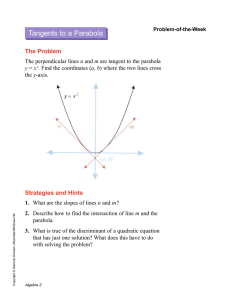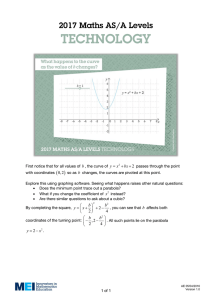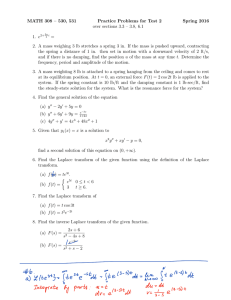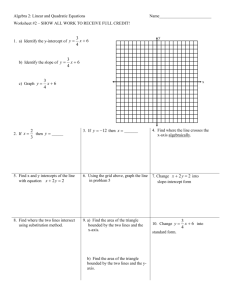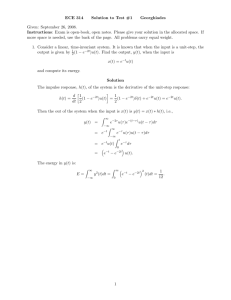Engineering Mathematics II Honors Sections 819–820
advertisement
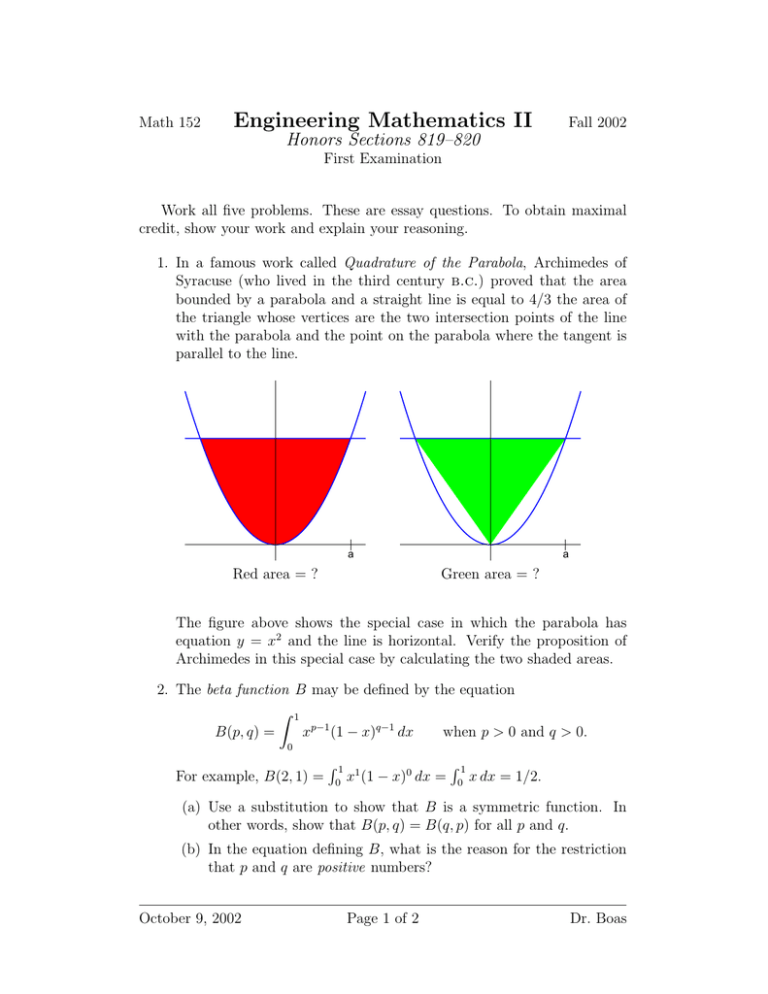
Math 152 Engineering Mathematics II Fall 2002 Honors Sections 819–820 First Examination Work all five problems. These are essay questions. To obtain maximal credit, show your work and explain your reasoning. 1. In a famous work called Quadrature of the Parabola, Archimedes of Syracuse (who lived in the third century b.c.) proved that the area bounded by a parabola and a straight line is equal to 4/3 the area of the triangle whose vertices are the two intersection points of the line with the parabola and the point on the parabola where the tangent is parallel to the line. a Red area = ? a Green area = ? The figure above shows the special case in which the parabola has equation y = x2 and the line is horizontal. Verify the proposition of Archimedes in this special case by calculating the two shaded areas. 2. The beta function B may be defined by the equation Z 1 xp−1 (1 − x)q−1 dx when p > 0 and q > 0. B(p, q) = 0 For example, B(2, 1) = R1 0 x1 (1 − x)0 dx = R1 0 x dx = 1/2. (a) Use a substitution to show that B is a symmetric function. In other words, show that B(p, q) = B(q, p) for all p and q. (b) In the equation defining B, what is the reason for the restriction that p and q are positive numbers? October 9, 2002 Page 1 of 2 Dr. Boas Math 152 Engineering Mathematics II Fall 2002 Honors Sections 819–820 First Examination Z 2 4πx2 dx represents the volume of a x 2 1 (1 + e ) solid obtained by revolving a region R (contained in the first quadrant of the x-y plane) about an axis. 3. Suppose that the integral (a) What could the region R be if the axis of revolution is the x-axis? (b) What could the region R be if the axis of revolution is the y-axis? 4. Give an example of a polynomial p(x) of degree 2 such that the graph of 1 an anti-derivative of the rational function has the shape illustrated p(x) in the figure below for x > 0. Explain your reasoning. x−axis 0 2 Z x A piece of the graph of 2 1 dt p(t) 5. The Laplace transform of a bounded function f (t) is the new function F (p) defined by the following improper integral: Z ∞ F (p) = f (t)e−pt dt when p > 0. 0 For example, if f (t) is the constant function 1, then the Laplace trans· −pt ¸N Z N e 1 −pt 1 · e dt = lim = . form F (p) equals lim N →∞ 0 N →∞ −p p 0 (a) Calculate the Laplace transform of f when f (t) = t. (b) There does not exist any bounded function f (t) whose corresponding Laplace transform F (p) is identically equal to 1. Why not? October 9, 2002 Page 2 of 2 Dr. Boas
